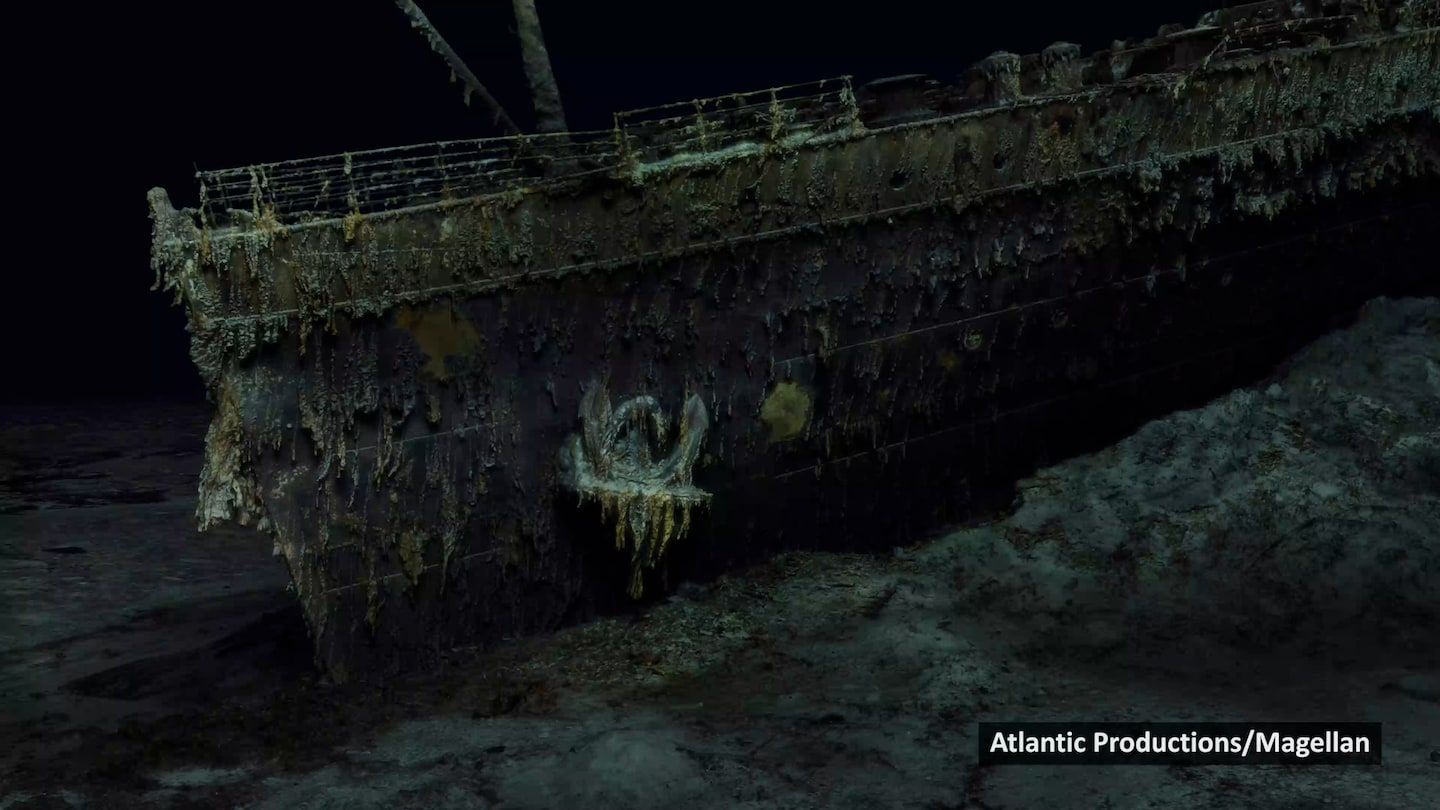New 3D scans uncover Titanic shipwreck in extraordinary detail
A deep sea mapping company combined thousands of images to create the first full-size 3D scan of the Titanic wreck. (Video: Atlantic/Magellan)
Listen 5 min Comment on this story Comment Gift Article Share
More than a century after the Titanic sank on its maiden voyage from England — a tragedy that continues to captivate scientists, Hollywood and the public — cutting-edge technology may be providing clues as to how the most luxurious passenger ship of its time met such a doomed end. Are you on Telegram? Subscribe to our channel for the latest updates on Russia’s war in Ukraine. ArrowRight A massive underwater 3D scanning project, led by British deep-sea mapping company Magellan, this week revealed a “digital twin” of the vessel with stunning features of the wreckage some 3,800 meters deep in the north Atlantic Ocean.
“The volume of data that we acquired was enormous,” Magellan chief executive Richard Parkinson said in a statement, and “the results were astonishing.”
Parkinson called the effort an “unprecedented mapping and digitalization operation of the Titanic … one of the most famous yet inaccessible man-made objects.” It took place over six weeks in 2022 and faced bad weather and technical complications. But the scans that followed meant the ship could then be mapped in “extraordinary detail,” according to the company.
Advertisement
Its scientists observed the gaping hole where the grand staircase was once positioned — the staircase made famous in the 1997 blockbuster movie with Leonardo DiCaprio and Kate Winslet. They even found bottles of champagne and the serial number on a propeller.
The images released do not show any evidence of the over 1,500 lives lost in the disaster.
Previous images of the ship — which hit an iceberg while on its way to New York City and was discovered by American oceanographer Robert Ballard and others in 1985 — have been limited by low light levels and poor water quality.
Magellan’s process generated over 715,000 still images that provided the data allowing its team to create a digital model of startling clarity. It shows the bow and stern section of the ship, which separated upon sinking, as well as the scene’s three-mile debris field.
Advertisement
A specialist ship was positioned in the Atlantic about 430 miles off the Canadian coast, with two submersibles — named Romeo and Juliet — deployed for hours below the surface to map every millimeter of the wreck.
The wreck was not touched or disturbed in the process, the company said, and ended with a flower-laying ceremony in memory of those who died. Magellan is now working with media company Atlantic Productions to make a documentary about the project.
“I have been studying Titanic for 20 years, but this is a true game changer,” Titanic explorer and researcher Parks Stephenson said in a statement. “What we are seeing for the first time is an accurate and true depiction of the entire wreck and debris site. I’m seeing details that none of us have ever seen before.”
He hailed the work as the “beginning of a new chapter” for the next generation of Titanic study.
Advertisement
The scans will also give scientists and archaeologists a new level of access, said Helen Farr, maritime archaeologist at the University of Southampton. They will allow researchers to study the ship’s condition, document decay and better monitor the marine environment, Farr told The Washington Post.
“These 3D scans and images also tell the story of the human loss,” she added, with personal items such as shoes and crockery recovered from the seabed. “Living in Southampton, the port city from which RMS Titanic set sail in 1912, I know that these losses have not been forgotten. More than 720 of the 900 crew were from the city. A generation was lost in this disaster.”
Even before its ill-fated maiden voyage, the ship was famous around the world for its opulence and such extravaganzas as a gymnasium and swimming pool on board. Its passengers included members of America’s and Britain’s wealthiest or most famous families, as well as immigrants making their way to new lives.
Advertisement
The wreckage became a UNESCO protected heritage site in 2012, part of an effort to protect and preserve the remains. The ship’s iron continues to erode and rust, noted Titanic expert Leon Litvack, a researcher at Queen’s University Belfast — the city where the luxury liner was built.
“These scans are very evocative. … She was a formidable vessel,” he said.
The deep sea’s low oxygen levels have helped keep the Titanic relatively well preserved, Litvack said, and now advanced technology can help plumb more of her secrets. “This seemingly unsinkable ship perished in a matter of hours,” he told The Post.
The new images may trigger another surge of fascination.
Part of the Titanic’s enduring appeal is the sheer scale of the disaster and the mystery of what went so terribly wrong. Was it the iceberg, the ship’s speed, a lack of life boats, the failure of SOS messages to get out — or all of those factors? The “what ifs,” Litvack said, will continue to be debated for decades to come.
“It was more than just a shipwreck,” he added. “It will endure in the public mind.”
GiftOutline Gift Article
Source: The Washington Post


